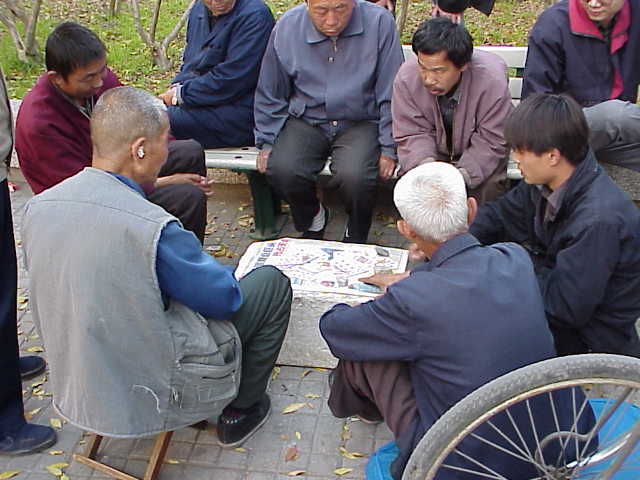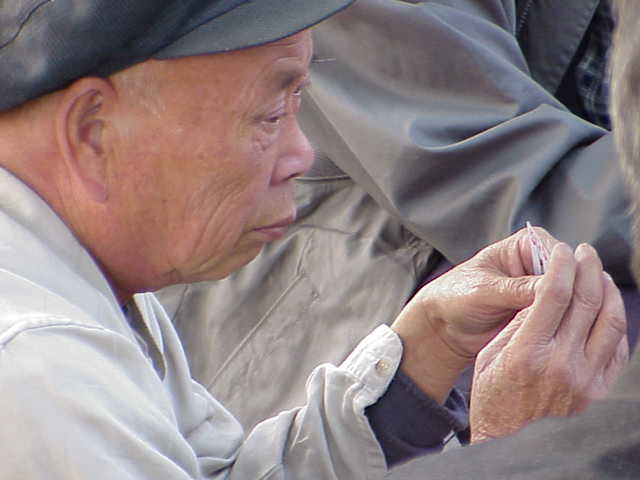The creative works sublime success,
Furthering through perseverance. – I Ching
Thus, in the middle of modern Beijing a medieval masterwork appears. It’s been renamed Beijing Ancient Observatory and lives on the southwest side of Jianguomen crossroad in Dongcheng District of Beijing. When I had asked our local guide about it, he said it wasn’t open anymore
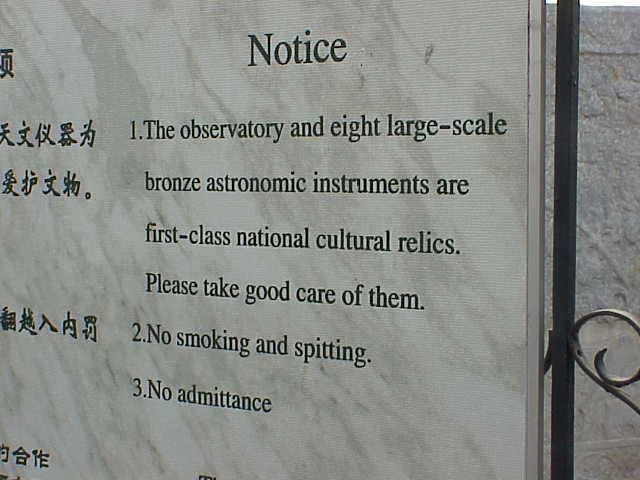
Despite his assertion, I persevered.
Wandering the short distance from our hotel I found it both open and fascinating. The observatory is located on the flat rooftop of a small building, easily missed by a casual passer-by. As Samuel Taylor Colleridge wrote,
In Xanadu did Kubla Khan
A stately pleasure-dome decree:
Where Alph, the sacred river, ran
Through caverns measureless to man
Down to a sunless sea.
So twice five miles of fertile ground
With walls and towers were girdled round;
And there were gardens bright with sinuous rills,
Where blossomed many an incense-bearing tree;
And here were forests ancient as the hills,
Enfolding sunny spots of greenery.
He also built this observatory.
The current observatory was completed in 1442
The current observatory was completed in 1442. Ming and Qing astronomers made their observations here. As the Emperor was considered the Son of Heaven, the movements of the heavenly bodies were an important affair. It was taken over by Jesuits in the 1600’s. It still has 8 large Ming dynasty instruments on the roof . According to the museum they consist of “celestial body equipment, equator theodolite, ecliptic theodolite, horizon longitude equipment, quadrant equipment, Simple Phenomena equipment, horizon theodolite “ Yet these aren’t anodyne instruments. Dragons and other mythical creatures, frozen in bronze, support and protect their charges.

The observatory itself is located on a 15-meter-tall brick platform
and about 40 x 40 square meters wide. It’s one of the few remaining pieces of the old Ming Dynasty city wall. Interesting as this small segment is, the wall once ran around Beijing.
As I entered, a man motioned me to go up the obvious stairway to the rooftop, while another man appeared and asked if I wanted to see the astronomical instruments. I said “yes”. So, he led me around the back where there were several replica copies. Redundantly, he explained “Made from fiberglass, not original”. Coincidentally, we just happened to be a few steps from to his shop. He sold compasses and seismographs (along with an eclectic selection of jewelry, bronzes, and snuff bottles.) I told him I’d return afterwards.
Then I went back to the stairway where the other man waited. He now yelled “UP!” in an I-told-you-so manner. Turned out he had his own shop, too, at the top of the stairs.
Despite the sign to the contrary
he did finally admit me to the actual rooftop observatory instruments. These are not hand held pieces! They’re larger, heavy pieces and likely came with their own crew to assist the honorable astronomer.
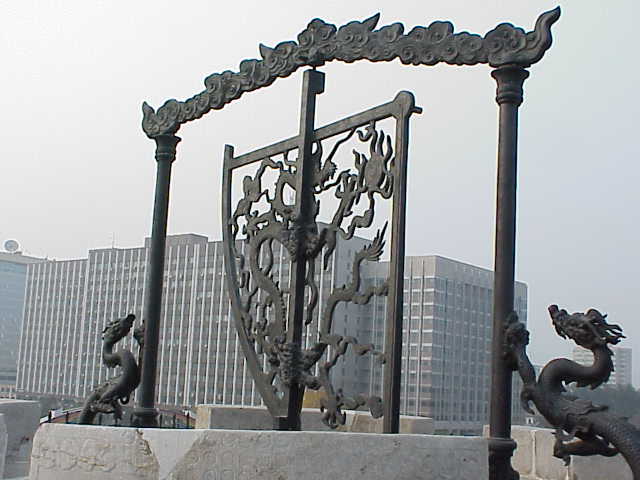


Among the instruments on display:
- The armillary sphere measures the positions of celestial bodies. It consists of two bronze disks. One that tracks the movement of the sun. The other that follows non-sun-related bodies. These are the ecliptic armillary and the equatorial armillary
- The quadrant dates from 1673 and measures the altitudes and zenith locations of celestial bodies
- The theodolite was built in 1715. It measures altitude and azimuth coordinates of celestial bodies. An azimuth theodolite is a similar instrument that lacks the ability to record altitude.
- The astronomical sextant measures the angular distance between celestial bodies. It also measures the angular diameter of the moon and sun.
- The celestial globe was built in 1673. It shows when celestial bodies rise and set. It also finds the altitude and azimuth of those bodies at any given time
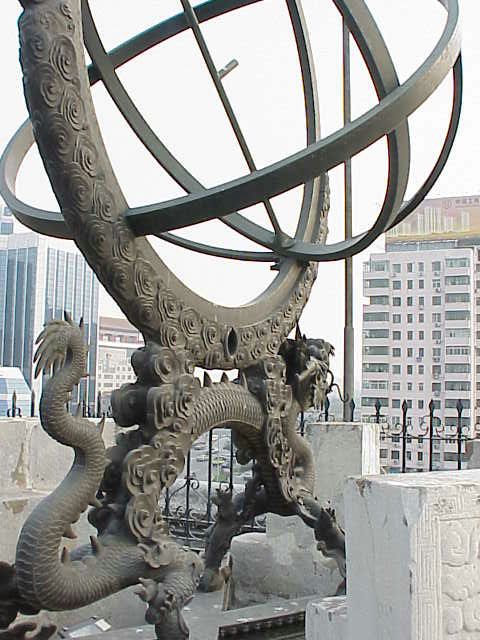

Here Be More Dragons – a survey of dragons around the world
On the way back to the hotel,
I wandered thru small park, watching card players, bicycle repairmen and dominos games.

The card game resembled Uno and rummy. It used card & run matching, But I never did get all the rules. Tempo and delivery of cards varied from a casual flick to a defiant slap of a run of cards. It never seemed to affect subsequent play, though. While there seemed to be a winner for each hand, no cumulative score was kept. Over at the dominos, similar variations in slap technique were observed. Here the loser stepped out to let someone else in for the next round.
